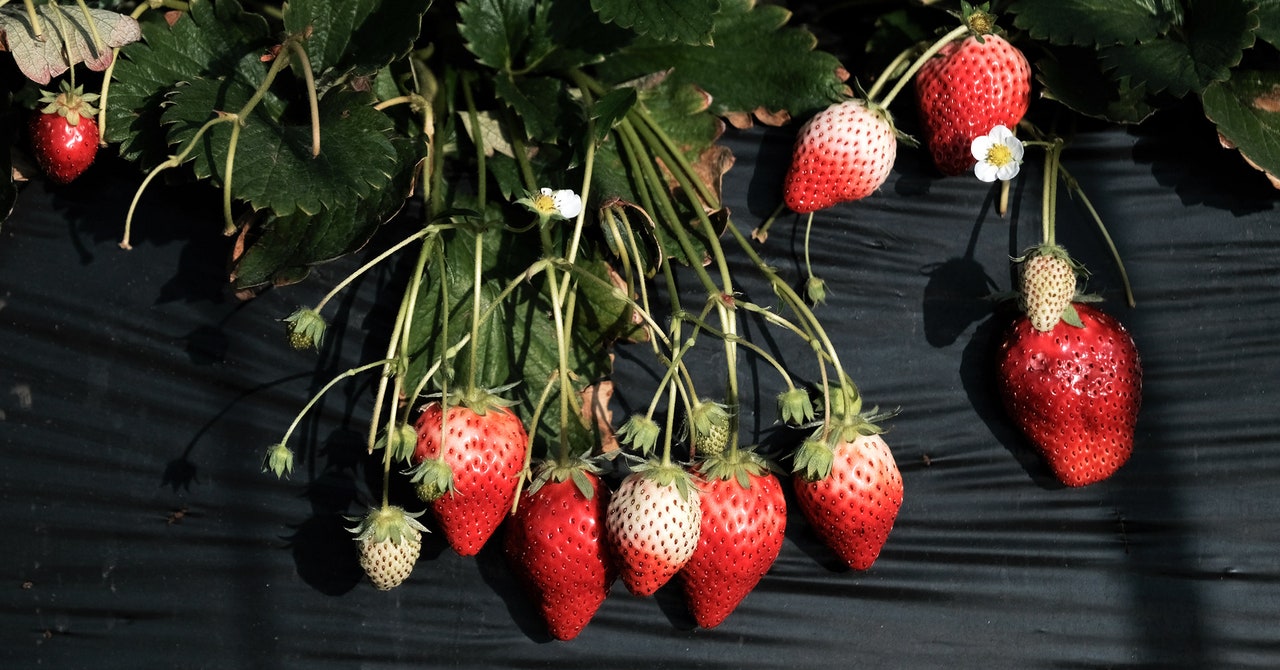Rhee said Traptic stood out from other companies in the space because its robot doesn’t touch the strawberry. Instead, it grabs strawberries by the stem and pulls firmly enough to dislodge the fruit, but light enough not to damage the rest of the plant.
Such tasks are an ongoing challenge. A recent study reviewed nearly 50 harvesting robot projects from 2000 to 2020 and found that harvesting robots are not yet in widespread use, largely because most robots still can’t do a better job than a human.
Hugh Zhou is lead author of an analysis of AI advances in fruit harvesting robots and their commercial viability. The study was conducted by researchers who developed an apple-harvesting robot at Monash University in Australia. Based on what’s possible today, Zhou said he can envision a scenario where robots pick 70 percent of the easily classified strawberries and humans pick the remaining crop. It’s only in recent years that HarvestCROO Robotics and a handful of other companies have developed their systems to pick strawberries at rates competitive with humans.
Zhou says the makers of fruit-harvesting robots are heavy on demo videos and light on data. The majority don’t share damage rates publicly, or how well their vision systems perform when picking strawberries from bunches or strawberries partially hidden behind leaves, two main reasons computer vision systems aren’t reaping the benefits. Crushing or bruising berries is still a common problem, and accidentally damaging one strawberry while trying to pick another is one that is often overlooked and rarely mentioned.
Companies that work with robots to harvest fruit say there are reasons why many have not left the prototype stage and that only a handful of machines are currently in use.
In April 2021, AppHarvest, the operator of the largest greenhouse in the US, acquired Root.ai, a Somerville, Massachusetts-based company whose Virgo machine picks grape tomatoes with a small, three-pronged robotic grapple. This technology is now also being used to pick strawberries and cucumbers with four- and eight-fingered grapples. As part of the deal, Root.ai CEO Josh Lessing became CTO at AppHarvest.
The pick rate has doubled since the acquisition, Lessing says. He says the company now wants to cut the cost of the robots as it finalizes Virgo hardware in 2023.
Today, Virgo picks healthy fruit better than most people, but it needs to be better able to detect ripeness and damage less fruit before it can be used on a large scale. Reducing the damage rate has been linked to increased use of soft grippers and passive forms of robot control, said Lessing, former research director at Soft Robotics.
Proponents of computer vision systems for agriculture argue that being able to predict when fruit is ripe will lead to better sales, less waste and more yield as the world’s population grows to 10 billion people.
Robots can also help grow and market expensive specialty fruits. Robots working in tandem with automated vision systems can monitor crops 24 hours a day to predict the ideal time to pick a ripe, red strawberry. The startup Oishii raised $50 million for its vertical farming business last fall as it works to replicate the process of growing sweet Omakase strawberries typical of the Japanese Alps. A box of 11 berries goes for $50.
Advanced Farm operates 10 robotic pickers at Blazer Wilkinson strawberry farms in Central California. Each machine can pick about 100 pounds of strawberries per hour. Tarpaulins drape along the top and side of a machine that sits on two rows of strawberries at a time. The sails keep out light and help cameras and computer vision systems classify fruits and control robotic arms – light can affect the computer vision system, so the machines usually work at night.
Each time a ripe strawberry is identified, a silicone robotic hand with a suction cup in the center steps in, grabs the strawberry, then uses three fingers to twist it away from the stem and place it in a container. Advanced Farm designed nearly 50 versions before deciding on the current order picking system design.
Kyle Cobb, co-founder of Advanced Farm, says the company’s robots are “on the margins” but are still more expensive than human strawberry pickers. “It’s one of those problems that we usually have solved, but as with all robotic harvesting problems, the last few percent will be difficult to build,” he says.

